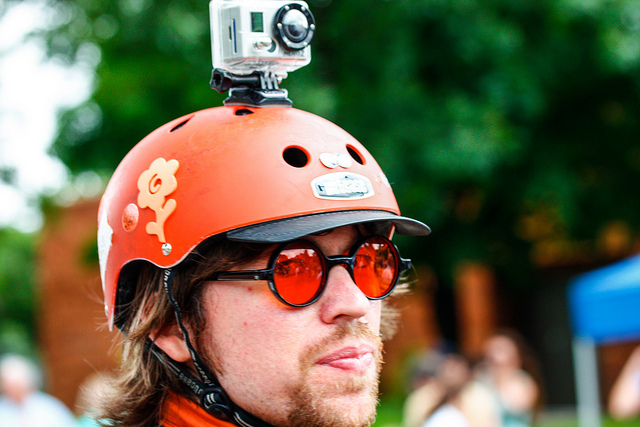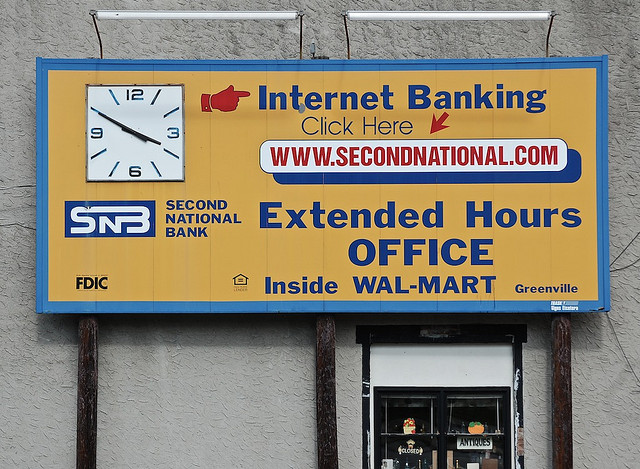Unlock the Magic in Your Story Now
Get the Free 20 questions to Ask Before Launching Your Idea workbook when you sign up for occasional updates.
Get the Free 20 questions to Ask Before Launching Your Idea workbook when you sign up for occasional updates.
How To Write Your Mission Statement And 20 Great Mission Statements To Inspire You
filed in Marketing, Storytelling, Strategy
 Have you ever noticed how we tie ourselves up in knots and overcomplicate things when we put our business hats on? Your mission statement doesn’t need to be long and complex, it’s simply a promise—your statement of intention.
Have you ever noticed how we tie ourselves up in knots and overcomplicate things when we put our business hats on? Your mission statement doesn’t need to be long and complex, it’s simply a promise—your statement of intention.
A mission statement needs to clarify the answers to the following two questions:
What do you do? What happens because you exist?
As you can see from the examples of mission statements below you don’t need to be long winded, often a single sentence is enough to say what you need to say.
20 GREAT MISSION STATEMENTS
WARBY PARKER
To create boutique-quality, classically crafted eyewear at a revolutionary price point.
TED.COM
Spread ideas.
INSTAGRAM
To capture and share the world’s moments.
PATAGONIA
Build the best product, cause no unnecessary harm, use business to inspire and implement solutions to the environmental crisis.
TWITTER
Instantly connect people everywhere to what’s most important to them.
UBER
Make transportation as reliable as running water, everywhere, for everyone.
ADOBE
Move the web forward and give web designers and developers the best tools and services in the world.
GOOGLE
Organize the world’s information and make it universally accessible and useful.
GO PRO
To help people capture and share their lives’ most meaningful experiences with others—to celebrate them together.
STARBUCKS
Inspire and nurture the human spirit – one person, one cup and one neighbourhood at a time.
NEST
To keep people comfortable in their homes while helping them save energy,
AMAZON
To be Earth’s most customer-centric company.
NIKE
To bring inspiration and innovation to every athlete in the world.
AIRBNB
To build a community-driven hospitality company.
INNOCENT JUICES
We’re here to make it easy for people to do themselves some good (whilst making it taste nice too).
LEGO
Inspire and develop the builders of tomorrow.
FACEBOOK
To make the world more open and connected.
JAMIE OLIVER
Help as many people as possible eat better food and live a better life.
VIRGIN ATLANTIC
To embrace the human spirit and let it fly.
OCADO
To establish the first new supermarket in a generation.
So, why does your business exist?
Image by Bjørnar E.
Share this article
Where Wile E. Coyote Went Wrong
filed in Strategy
 Do you remember those old cartoons where Wile E. Coyote is so focused on outsmarting The Road Runner that he inevitably ends up getting in his own way? He spends so much time and energy trying to be one step ahead of the bird that he forgets what his end goal was.
Do you remember those old cartoons where Wile E. Coyote is so focused on outsmarting The Road Runner that he inevitably ends up getting in his own way? He spends so much time and energy trying to be one step ahead of the bird that he forgets what his end goal was.
It’s easy (and human) to focus on the competition. Every business big or small has its own Road Runner to outsmart. But what if the competition isn’t your biggest threat? What if fear of failure, complacency, maintaining the status quo, the agility of upstarts, saving face or a product that doesn’t exist yet is your real competition?
Your end goal is almost never to beat the competition, it’s usually far bigger than that. So, how will you maintain focus and get out of your own way?
Image by Kevin Trotman.
Share this article
How Disruptive Innovations Happen At The Edges
 Think of any business that’s succeeded over the past two decades and especially the upstarts that have left incumbent brands on the back foot. Kodak vs. Instagram, Sony vs. Go Pro, Hilton vs. Airbnb, cab companies vs. Uber, banks vs. Paypal, Borders vs Amazon, Blockbuster vs. Netflix, Chubb vs. Canary and on and on and on.
Think of any business that’s succeeded over the past two decades and especially the upstarts that have left incumbent brands on the back foot. Kodak vs. Instagram, Sony vs. Go Pro, Hilton vs. Airbnb, cab companies vs. Uber, banks vs. Paypal, Borders vs Amazon, Blockbuster vs. Netflix, Chubb vs. Canary and on and on and on.
Now think about how they innovated and their path to market.
What you’ll notice is that world changing innovation stems from understanding the problem that needs to be solved for a particular group of people. The best innovations don’t create a need or a want—they tap into a need or a want that already exists, one that hasn’t yet been fulfilled.
Great innovation, and thus products and services people care about, lies at the intersection of the customer’s latent desire and your solution. Innovation then is not always about giving people a slightly better version of what they’ve got, or have demonstrated that they need, even if that is what you’re equipped to deliver and how you profit today. Sometimes it’s about rewriting the future for a customer who doesn’t know what will matter to him in five years time, in a market that doesn’t yet exist.
Image by Dave.
Share this article
The Purpose Of Brand Storytelling
filed in Marketing, Storytelling, Strategy
 Every September while my son was growing up there was a ritual to be upheld. Of course we had the usual beginning of school year things to do and a checklist to follow, but what Adam really cared about more than all of that, was choosing the football boots he would wear for that season. Football is more than a sport in England, it’s a badge of belonging. It’s also a shortcut to mattering to your peers. The boots are a part of the story the young player tells himself about what he’s setting out to achieve that season and how he’s going to matter.
Every September while my son was growing up there was a ritual to be upheld. Of course we had the usual beginning of school year things to do and a checklist to follow, but what Adam really cared about more than all of that, was choosing the football boots he would wear for that season. Football is more than a sport in England, it’s a badge of belonging. It’s also a shortcut to mattering to your peers. The boots are a part of the story the young player tells himself about what he’s setting out to achieve that season and how he’s going to matter.
I’m not sure how or when the adidas Predator brand of football boots became part of Adam’s story, but these were the boots he rationalised were ‘the best’ and only they in turn would make him be ‘his best’. He never, ever wore any other football boots. These weren’t just boots though, they were months of hopes and dreams about goals that might be scored, or games that could be won with a single accurate cross, wrapped up in red leather with three sliver stripes down the side.
It’s easy to get caught up in the ‘how to’ of telling your brand story and even easier still to believe that the primary reason to invest in telling it is to sell more. But brand storytelling should primarily be the driver of participation, not sales. The way we enable our customers to attach meaning to our products and the reason they want to belong.
Because when people feel like they belong—that they are part of the brand story and can own it, they become loyal customers. It turns out that the best brands in the world are a set of co-dependent shared stories, a two way experience between the customer and the brand.
The brands we really love are the ones that create difference for us, they make us feel like we belong, that we are part of their story and they are part of ours. Just like adidas became part of my son’s story when he was growing up.
Image Tito Perez.
Share this article
Thinking About Marketing As A Strategy For Growth Not Just Sales
 Mostly we market to sell more.
Mostly we market to sell more.
The restaurant owner who tells his staff to remember to ‘push drinks and bottled water’ is marketing for increased sales today.
The alternative is to be the marketer who bakes growth into his business by delighting customers, giving them a story they want to tell (and a way to share it).
The modern marketers at technology startups call this growth hacking. Growth hackers optimise their businesses to acquire new customers by first delighting one customer and then making it easy for that customer to share the story with their friends. They win by delivering on a promise, by connecting customers and having a plan not just to sell more to each customer today, but to give every person more to talk about and an easy way to do that.
Last year hotels in New York lost out on a million booked nights because of Airbnb. The hotel’s strategy has been been to maximise revenue from each captive guest, while Airbnb’s has been to facilitate a real travel experience one guest, one host at a time.
It turns out that growth hacking is really the practice of creating and leveraging word of mouth with intention and it’s not confined to technology businesses. When we market for long term growth and not just sales we adopt a different posture. We’re in the business of doing the right thing by every customer over time and we begin each day by asking a different set of questions.
The salesperson asks, “How much can I sell?”
The gifted modern marketer asks, “How much difference can I create?”
Image by Lady K.
Share this article
How To Disrupt The Market
 Do you remember the days when printed news was so valued that there were two editions of the daily newspaper? People waited at the local shops for evening editions to arrive at 4pm and paperboys weaved between cars which were stopped at a red light during rush hour where drivers also waited with exact change to receive the news.
Do you remember the days when printed news was so valued that there were two editions of the daily newspaper? People waited at the local shops for evening editions to arrive at 4pm and paperboys weaved between cars which were stopped at a red light during rush hour where drivers also waited with exact change to receive the news.
My grownup sons have never bought a newspaper and they never will. They don’t wait to receive the news, they make it appear on demand when they want it, on their terms. The double-digit decline in newspaper circulation isn’t a surprise and it’s certainly not news to anyone anymore.
We might say that the Internet and mobile devices disrupted the print media market. But before innovation can disrupt the market it must disrupt the moment—that point where a single person feels or perceives something that causes them to change how they act. Everyone didn’t stop buying newspapers back in 2007 when Twitter launched. It isn’t one sudden seismic shift that creates change, but a billion tiny incremental movements in the moment.
We are often impatient when we want to change how people act (which is why marketing exists after all). This impatience is the reason health campaigns and other traditional marketing efforts often fail to miss the mark. They try to change everything and everyone all at once. But lasting change doesn’t happen that way.
If you want to disrupt your market look for opportunities to change a single micro-moment, one person at a time.
Image by Dmitri Korobtsov
 We’ve been stuck in a time warp for the past fifty years with a
We’ve been stuck in a time warp for the past fifty years with a  As marketers we invest a great deal of time and money working out how to tell the story of our products. But if we can agree that marketing is giving people something to talk about, why aren’t we using resources in equal measure to do that. What if we began with a new set of questions?
As marketers we invest a great deal of time and money working out how to tell the story of our products. But if we can agree that marketing is giving people something to talk about, why aren’t we using resources in equal measure to do that. What if we began with a new set of questions? How do you feel when you click on a banner ad?
How do you feel when you click on a banner ad?